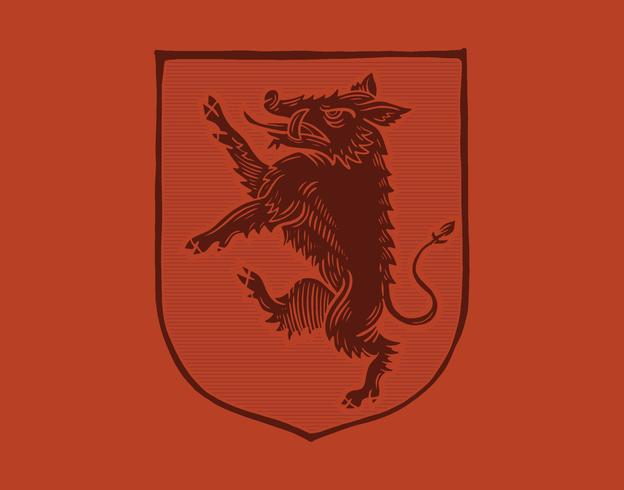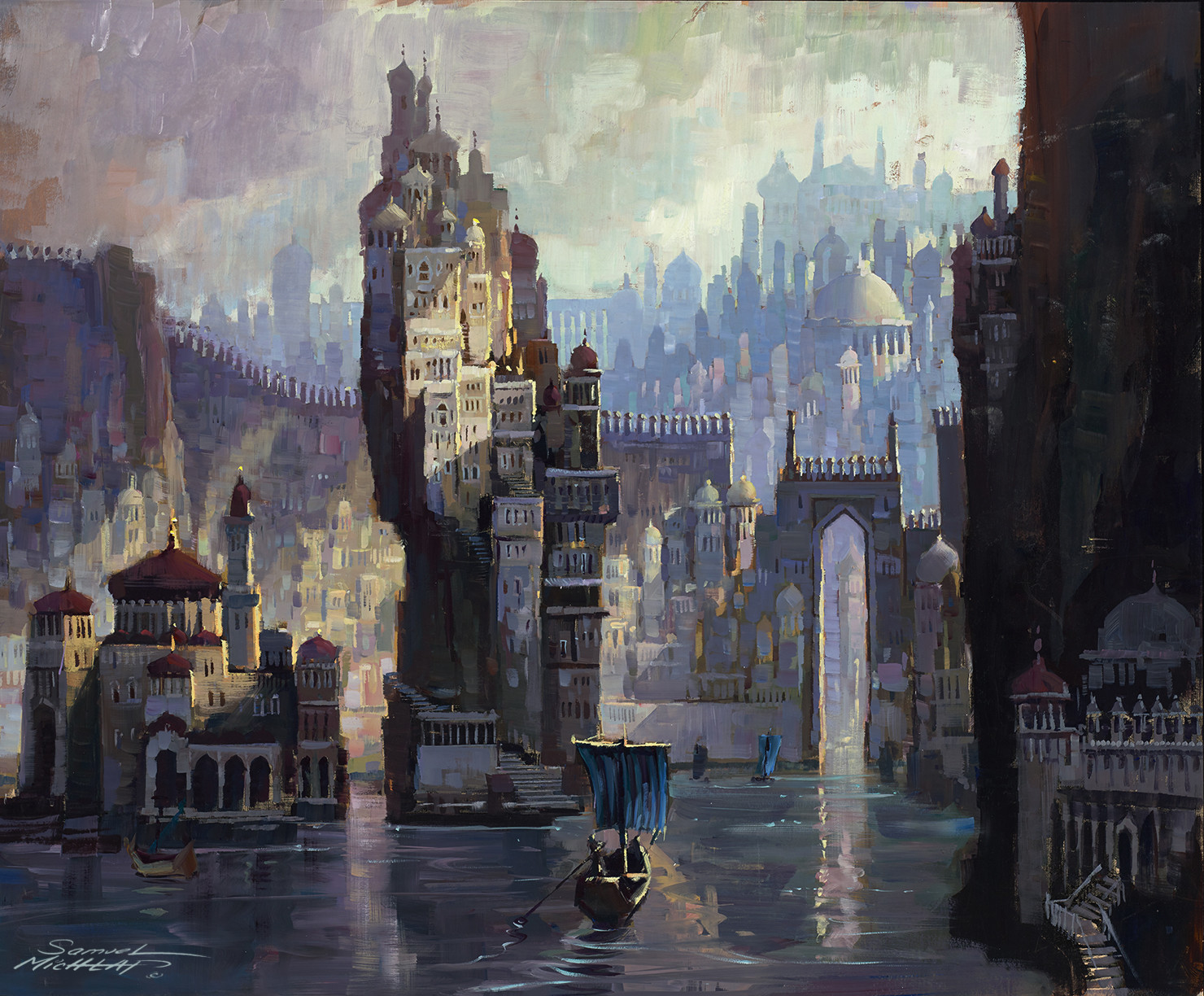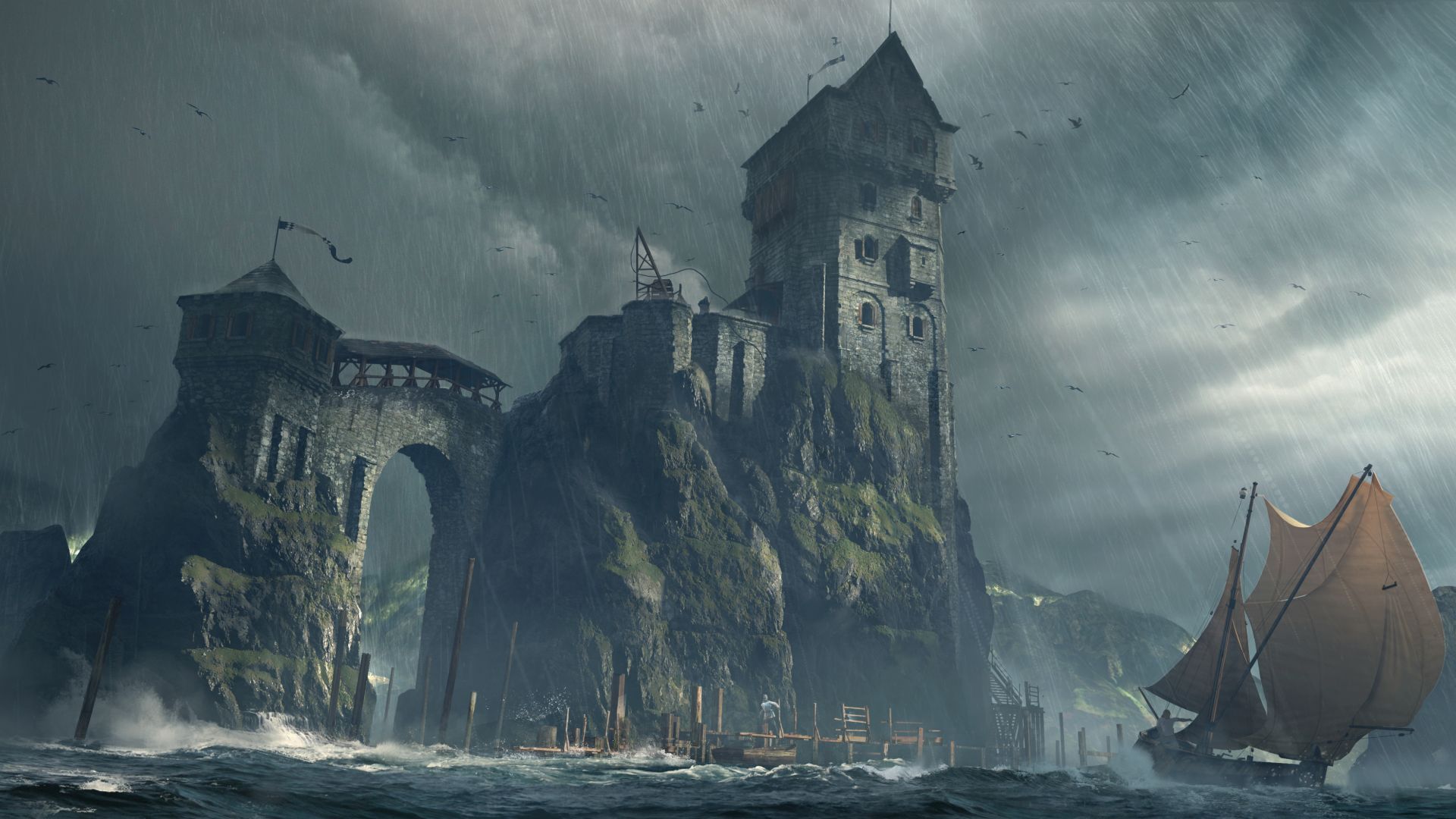Shield of the Grand City of Borletta
The Grand City of Borletta
The domain of the Grand Duke Duilius Bulgarelli di Borletta, or as he is known behind closed doors: the Mad Duke.
Borletta, the City of a Thousand Vices
This city by the sea has more than earned its enticing epithet. Its streets are infested with temptation, enough to make even the most pious of men buckle, and the most debauched blush. Its architecture, dominated by beautiful, white travertine stone gives the place an ironic, angelic appearance, which the historian Ardito Montagna remarked on in his work,
A History of Borletta, and Her Sins:
"The city itself is beautiful beyond compare, the gem of the Azure Coast. Looking upon the city, and her brilliance can invoke in a man the feeling that he is looking upon the domain of angels, but that impression is false. For upon entering the walls of Borletta, you are accosted by pickpockets, and whores (often one in the same); you are bumped and jostled about without the slightest hint of remorse; and you are lucky to find yourself only penniless, and bruised before night's end."
Despite the harsh words Signore Montagna had for the city, Borletta remains a beloved destination for many travelers, especially Styrian nobles looking to leave their clean, and respectable courts behind for a time to indulge in the many pleasures the city has to offer. Borletta's main exports among the Styrian courts are fashion and beauty trends. New hairstyles, new dresses, new make-ups, new perfumes, all of them that matter come from Borletta's salons, workshops, and laboratories. While certainly being the most progressive of cities in regards to such matters, the same cannot be said for the matter of slavery. While most Styrian cities have long since outlawed the practice, Borletta has bucked that particular trend, instead wholeheartedly embracing the institution. Slaves can be found all over, from burly dockworkers heaving crates of goods, to petite, finely groomed and oiled servants waiting on the beck and call of debauched noblemen. Wherever you go in Borletta, the sound of chains follows you.
The Mad Duke
Shield of the Noble Bulgarelli Dynasty
The Grand Duke of Borletta, Duilius Bulgarelli di Borletta, age twenty-two, is the black sheep of the family. From an early age, Duilius had a penchant for violence, and a fascination with pain, suffering, and power. He took well to lording his noble status above the servants, slaves, and paupers he considered below him. Apart from his
'quirks', as his mother insisted on calling his sadistic inclinations, Duilius appeared to be a model young Borlettan noblemen: bright, handsome, well-organized, witty, and stylish.
The second son of the former Grand Duke, Maximianus III, Duilius was slotted for a military career, his older brother - and only sibling - Maximianus IV was destined to follow in his father's footsteps, or so it seemed. Unfortunately, the Grand Duke's heir apparent fell terribly ill one winter when the city had become afflicted by a plague of consumption, which Maximianus IV soon succumbed to. This fateful death left the future of the city in the hands of Duilius, at the time only sixteen. The plague had also taken his mother, who the Grand Duke loved dearly (and who Duilius cared little for), leaving the already fleeting monarch weak, and in a state of despair. Less than a year after Maximianus III had lost his eldest son, and beloved wife, he died attending a summer feast under suspicious circumstances. While no evidence exists to indicate that Duilius had anything to do with his father's demise, that has not kept many among the courts, and among the citizens, from speculating.
Duilius was granted the title of Grand Duke of Borletta at the age of seventeen, and has spent the past five years working tirelessly in the pursuit of aggrandizing his city-state, and himself, with the ultimate goal of expanding beyond his current borders. The process of doing so has earned him no friends among the noble houses of his neighbor-states, especially that of the
"Boar of Styria", who Duilius often refers to as a "boorish oaf", a vitriolic play on the warrior-duke's nickname. Relations are equally poor with the nation of Sipani to the south.
A Recent History of Borletta
Upon Grand Duke Duilius assuming his father's place in command of the city, he immediately began the arduous task of winning over the members of Borletta's noble assembly. Through raucous parties, underhanded donations, and less-than-subtle threats, he has managed to bring most of the city's politicians under his wing, though a few dissenters remain. The most notable of these is Cloelius Fermi, the head of the shipwright's guild in Borletta, and one of the richest men in the city. Duilius' father killed Cloelius' brother in a duel many years ago over a dispute of honor, and evidently the man holds a grudge. Unfortunately for the Grand Duke, the guildmaster's wealth affords him much sway among his fellow noblemen, allowing him to block the Grand Duke's proposed measures on a number of occasions.
Apart from this minor hiccup, everything has been smooth sailing for the Grand Duke, domestically, at least. Borletta continues to flourish, mountains of denarii flowing into the city's coffers every day, the result of an expertly managed, albeit entirely corrupt, system of taxes and tariffs placed upon every good and service imaginable, from wood and marble, to rum and whores.
The recent history of the city has not always been so fortunate. It was only six years ago that Borletta was ravaged by a rapacious and all-consuming disease, taking with it slave and nobleman alike, leaving few survivors. The effects of this plague were far-reaching, though a quick, and well-planned quarantine of the city managed to keep it within the city's walls, it took a heavy toll on Borletta's economy. The quarantine disrupted trade for nearly a year, leaving the city in a sorry state, one which it's former king was unwilling, or possible unable, to cope with. Upon Maximianus III's demise, and Duilius' ascension to the throne, the new Grand Duke's skill with decisive, and often unforgiving management strategies led to the city's economy recovering, and coming into it's current "boom" state.



















